
People often tell me that they love to garden but that the trees on their lot create so much shade they can’t do much. I usually smile sympathetically and listen to their sad stories about their deer or slug eaten hostas. Then one day I read an article in Carolina Gardener magazine about the garden of Wyatt LeFever in the Piedmont area of North Carolina that included an invitation to see his garden. I called, made an appointment, and went to see it. Wow! I will never smile sympathetically again and listen to sad stories of shade gardeners! This was a garden to die for and provides a source of shade gardens secrets for success.
The garden occupies a wooded area on a hill with many large trees that provided different kinds of shade and ecological niches for a huge variety of understory plants. The garden is at its peak in mid April through May when the azaleas and rhododendrons are in bloom but at the same time it is a treasure trove of spring ephemerals, other herbaceous perennials, and ferns.
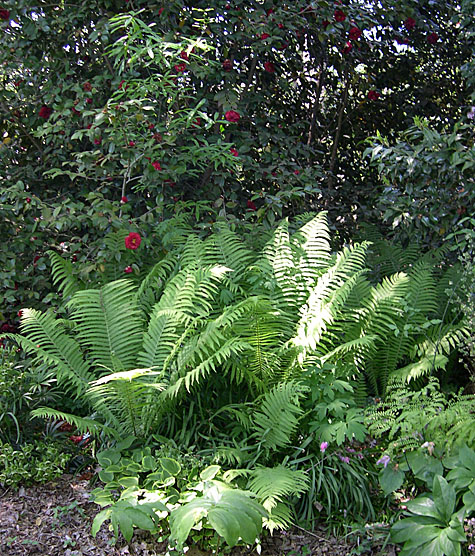
As we entered the garden we were greeted by large breath taking blossoms of rhododendrons and saw more bushes in bloom through out the woodland in an array of delicate colors. It is hard to pick a favorite because there are so many to choose from.
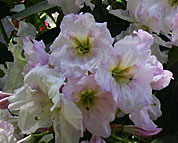
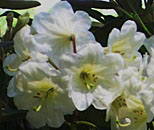
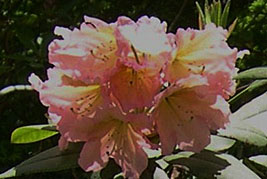
A variety of inviting paths led us through the garden. The main grassy path is wide and encourages visitors to enter. It can accommodate many guests at one time and facilitates conversation and sharing.
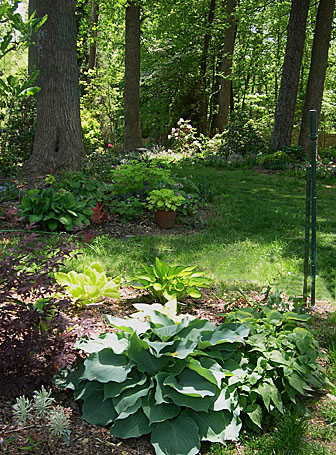
The understory creates woodland rooms under the forest canopy each with its own character created by the selection of plants and garden ornaments. A huge number of interesting and unusual plants in beautiful combinations enhance each other and create a natural wonderland in the cathedral like edifice created by the tall trees overhead.
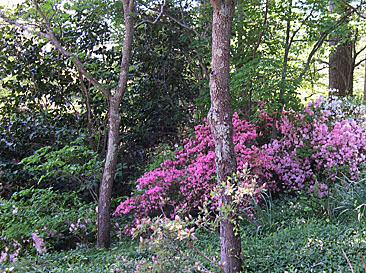
Plants attract the eye by their unusual color or form like these iris, Arisaema, variegated lily of the valley and Trillium.
 |
 |
 |
 |
The grass like leaves of Hakonechloa contrast in form and color with those of lungwort and arisaema.
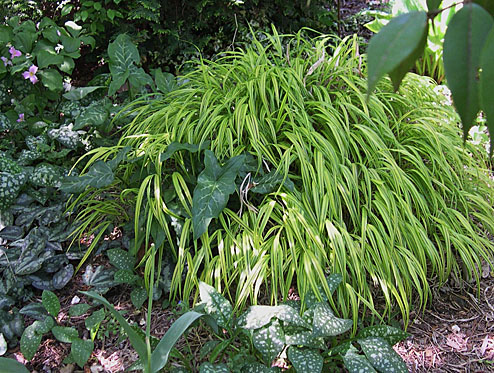
Many interesting trees are included like this Acer griseum, known for its beautiful exfoliating bark and unusual branching.
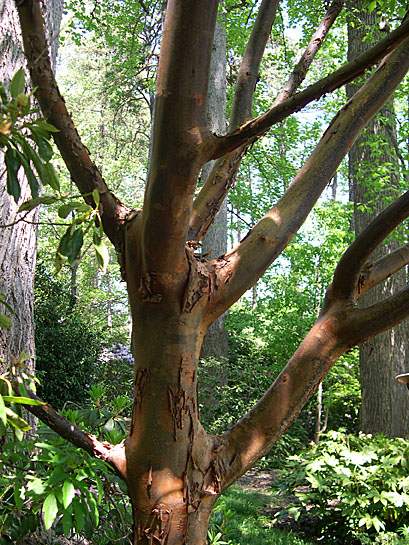
Numerous statues placed in strategic sites led the eye from one woodland room to another. Here is one of the more whimsical ones and my personal favorite.
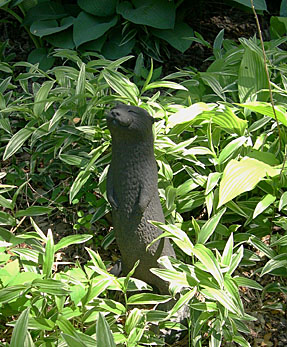
Potted plants are situated in strategic spots to lead the eye to new vistas; note how the mottling in the center of the Heuchera picks up the color of its pot.
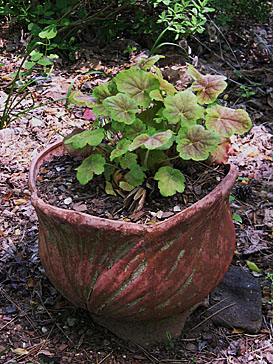
A large wind chime hanging from the lower branch of a large tree brings dulcet sounds to the visitor’s ears, adding another dimension to the garden experience.
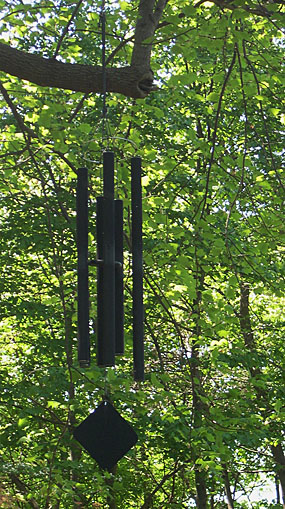
A bench in the shade near an armillary sundial invite the visitor to sit and enjoy the surroundings with old fashioned bleeding heart bloom profusely in the area behind.
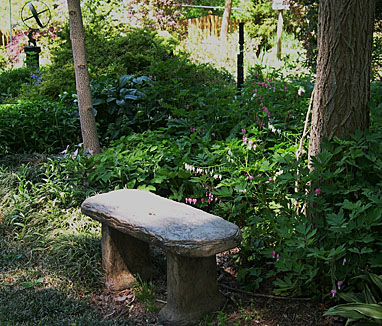
Now that you have had a look at this beautiful garden, let’s list the secrets to successful shade gardening.
1. Embrace shade, recognize all its different kinds, and see it as many opportunities, rather than as a problem. Evaluate the shade in various parts of the garden and identify the different niches that exist.
2. Plan the garden so that you have a variety of plants including trees, shrubs, bulbs, vines, and herbaceous annuals and perennials.
3. Create garden rooms each with its own character created by the use of color, textures, size and shape.
4. Meet the needs of your plants; locate each one so that its light requirements are met, provide water when needed, and keep the weeds out.
5. Provide a path so that you can move through your garden both when you work in it and enjoy it.
6. Add statuary, plants in decorative pots, wind chimes, and other accessories to enhance you experience.
7. Provide benches or other seating so that you can rest, relax and enjoy your garden.
Next time you feel that shade is a problem and standing in the way of your gardening, think of this garden, gain inspiration and renew your creativity.
N.B. Mr. LeFever is a noted plant breeder. He has developed and named 100 daylilies, six hostas, bearded iris and rhododendrons, and is well known for creating and developing butterfly koi at Blue Ridge Fish Hatchery, his wholesale fish farm.
There is hope for us all yet. Blog above is inspirational. Looks gorgeous!
Great post! I would love to hear more about shade in a semi-arid climate. Perhaps it is because I grew up in a humid climate, but the shade plants I know of don’t do well in the rain shadowed foothills of the northern Colorado. I have a few shady corners that are in desperate need of plants.
Gardening in semi-arid shade is a good topic. The June issue of Fine Gardening includes an article on shade plants for various parts of the country and for the Rocky Mountain recommends: ‘Mrs. Moon’ Bethlehem sage (Pulmonaria saccharata ‘Mrs. Moon’; ‘Herman’s Pride’ false deadnettle (Lamiastrum faleobdolon ‘Herman’s Pride’); ‘Marmalade’ heuchera (Heuchera Marmalade’), ‘Jack Frost’ brunnera (Brunnera ‘Jack Frost’); and ‘Elegans’ hosta (Hosta sieboldiana ‘Elegans’). All but the deadnettle likes some moisture so you would have to water them but they all have outstanding foliage that would be beautiful all season.